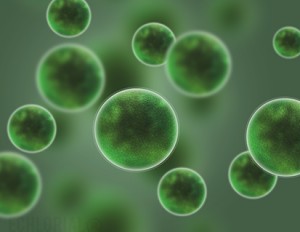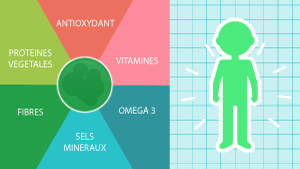1770, Parmentier introduces the potato to Europe
At the end of the 18th century, Antoine Parmentier made the potato popular in France to alleviate the risk of famine at the time. The cultivation of the potato was then little known in Europe except in Spain, Ireland and Germany. It was banned in France because it was suspected of causing leprosy! Like what, famous French precautionary principle has been applied for a long time…
With doubt quickly removed, the potato is gradually becoming a predominant food on our plates thanks to its very rich nutritional capabilities and ease of cultivation.
It solves a major problem of the time by drastically reducing the risk of famine in case of unsuccessful harvests. The potato is found today everywhere and in all its forms. There are thousands of delicious varieties, from the Agata to the Yukon Gold and the Belle de Fonteney. Thank you Parmentier !
Microalgae, what is ?
Chlorella, Spirulina, Astaxanthin, Klamath, Odontella… So many strange names that today appear more and more in organic stores and on the tables of our friends vegetarians and other aficionados of healthy diets.
Here too, like potatoes, the first traces of their consumption can be found in South America. The term “micro-algae” was used for the first time by Spanish historians describing the harvesting of spirulina by Aztecs in Lake Texcoco. These apparently consumed it in the form of a pasty cake.
The term ” algae ” describes a very broad group of organisms that share certain characteristics such as photosynthesis, the ability to convert solar energy into chemical energy. They grow in water and do not have roots.
Microalgae are therefore microscopic algae that make up the famous phytoplankton. Generally of the size of a few microns dimensions rather far from their macro-cousins, namely the algae that we all have in mind, with the spectrum of emotions generally associated, which goes from ” yuck… ” (on the beach) to ” yum!” (at a Japanese restaurant).
It is in Asia that seaweed is consumed the most: the average consumption is 14g per day in Korea and Japan. In the West, micro- and macro-algae are increasingly consumed but remain known only to a very small circle of initiates and “early adopters” of food.
Plankton, the nutritional promise of the future
Microalgae are true nutritional ” bombs “. In the case of organic chlorella and organic spirulina, they are more than 50% vegetable proteins, all amino acids including the 8 essential ones, minerals, vitamins E, C but also the B12 (chlorella) found mainly in meat, omega 3, polyunsaturated fatty acids, beta carotene, chlorophyll… The near-perfect composition of all the nutrients necessary for life.
Plankton is ” at the base ” of the food chain, so the billion-year-old organisms that make up the plankton are rich enough in nutrients to act as the foundation of the entire chain, including us ! Consuming plankton is in a way to operate a return to the fundamental sources by eliminating the intermediaries.
” Only the sea has the resources and potential to provide for the food needs of our growing populations “
Pierre Mollo, biologist, researcher, and global plankton specialist.
In the West, the risk of starvation is fortunately unlikely today, unlike in Parmentier’s time, but we still have our share of contemporary challenges : chemical and pesticide exposures due to over-industrialization of agriculture, obesity, heavy metal poisoning… have generated many diseases, dysfunctions, and dietary deficiencies in the best of cases.
It is in this context that we can say that microalgae is particularly adapted to our current society : not a food that ” fills “, but a food that nourishes and heals. Indeed, the cocktail of precious nutrients contained in these superfoods as well as their depolluting power allow to nourish, but also to prevent certain diseases and to cure symptoms often caused by deficiencies and/or intoxications.
Thousands of studies have been conducted on microalgae to evaluate their environmental impacts but also their health virtues (cholesterol, cancer, immune system, detoxification of heavy metals and PCBs, autism, etc.), but all their secrets have not yet been discovered. Thus, many testimonials report positive effects on: psoriasis, lyme disease, bipolar, candida, fibromyalgia, osteoarthritis… Read testimonials →
In Europe, few microalgae are allowed for human consumption. Here are some of them:
Chlorella, the Queen of Detox
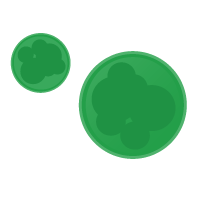
Scientific name: Chlorella vulgaris
Description: Chlorella or chlorella has 50% plant protein and full amino acids. It has the highest level of chlorophyll known and is very rich in polyunsaturated fatty acids and omega 3. Unquestionable champion of the “detox”. Depending on its method of cultivation, if this one is natural, it has vitamin B12, valuable for diets low in meat.
Environment: Fresh water
Area: Grown in Asia, Europe.
Spirulin, the Sportsman’s Ally
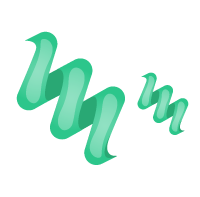
Scientific name: Arthrospira platensis
Description: Undoubtedly the best known, spirulina is not a microalgae to strictly speaking but a cyanobacteria. It is nevertheless a superfood packed with exceptional nutrients with 60% protein, vitamins, amino acids and its famous pigment phycocyanin, a real natural EPO.
Environment: Brackish water, a mixture of fresh and sea water.
Area: Grown in Asia, Europe, USA.
Haematococcus, Source of Astaxanthin
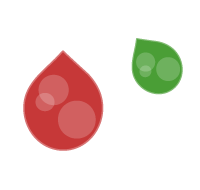
Scientific name: Haematococcus pluvialis
Description: Haematococcus is rarely consumed pure. We consume its extract, Astaxanthin, a powerful antioxidant to which we lend many virtues among which immuno-modulation, protection of the skin against UV and effects very interesting on the vision in particular against age-related macular degeneration (AMD). Learn more : Astaxanthin, a powerful antioxydant.
Environment: Freshwater.
Area: Grown in Europe, Israel, USA.
Klamath, the American
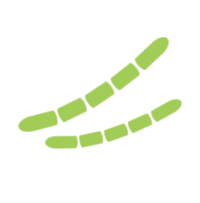
Scientific name: Aphanizomenon flos-aquae
Description: Aphanizomenon flos-aquae is a freshwater algae that comes from Klamath Lake in Oregon, USA. Very popular at the moment, it is believed to have virtues allowing a “mental clarity” and better concentration. Unfortunately, Klamath is not cultivated in a controlled environment and micro-cystines can be found in it, toxins that are very damaging for the liver.
Environment: Klamath Lake.
Area: Grown in Oregon, USA

